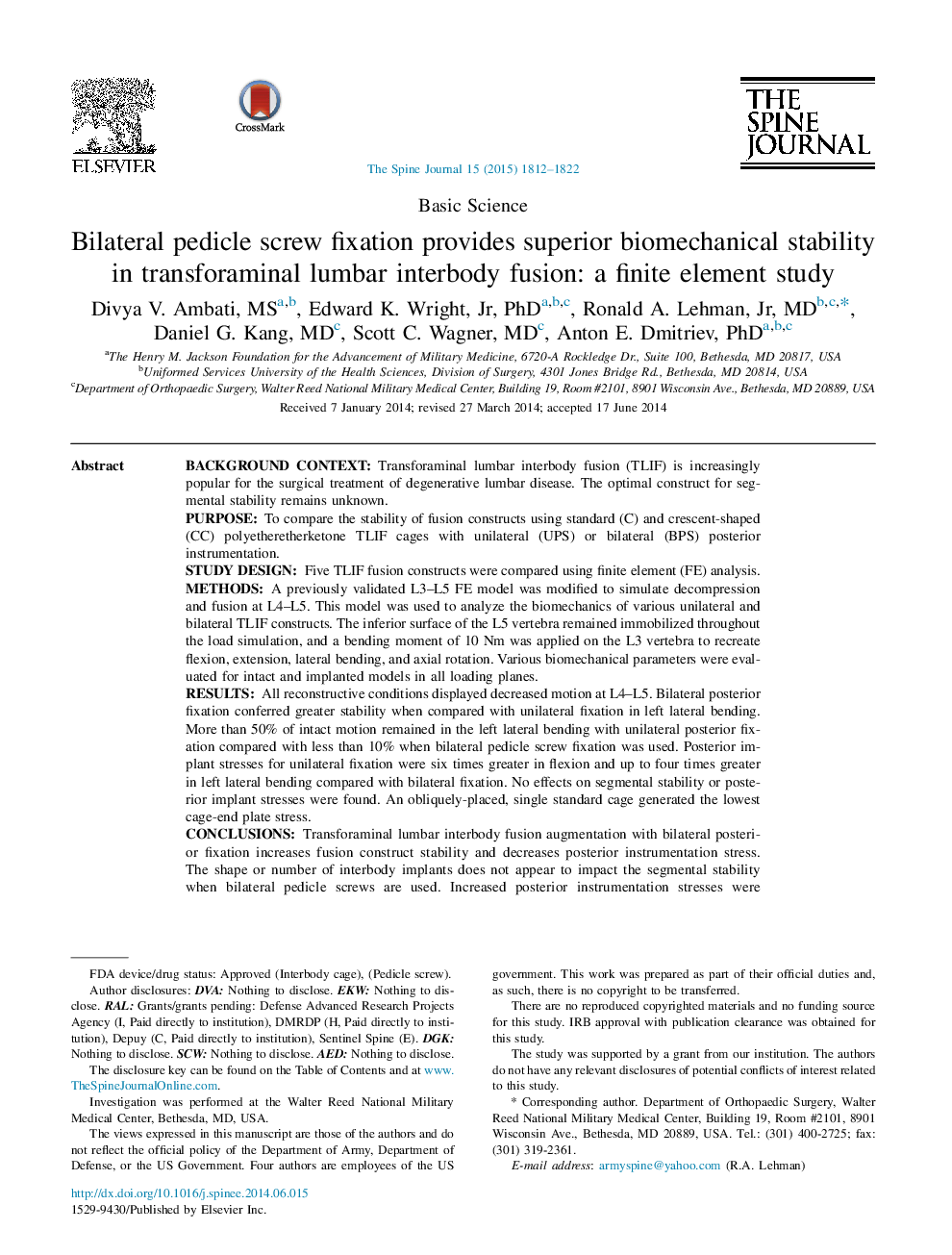| کد مقاله | کد نشریه | سال انتشار | مقاله انگلیسی | نسخه تمام متن |
|---|---|---|---|---|
| 6212466 | 1268580 | 2015 | 11 صفحه PDF | دانلود رایگان |
Background contextTransforaminal lumbar interbody fusion (TLIF) is increasingly popular for the surgical treatment of degenerative lumbar disease. The optimal construct for segmental stability remains unknown.PurposeTo compare the stability of fusion constructs using standard (C) and crescent-shaped (CC) polyetheretherketone TLIF cages with unilateral (UPS) or bilateral (BPS) posterior instrumentation.Study designFive TLIF fusion constructs were compared using finite element (FE) analysis.MethodsA previously validated L3–L5 FE model was modified to simulate decompression and fusion at L4–L5. This model was used to analyze the biomechanics of various unilateral and bilateral TLIF constructs. The inferior surface of the L5 vertebra remained immobilized throughout the load simulation, and a bending moment of 10 Nm was applied on the L3 vertebra to recreate flexion, extension, lateral bending, and axial rotation. Various biomechanical parameters were evaluated for intact and implanted models in all loading planes.ResultsAll reconstructive conditions displayed decreased motion at L4–L5. Bilateral posterior fixation conferred greater stability when compared with unilateral fixation in left lateral bending. More than 50% of intact motion remained in the left lateral bending with unilateral posterior fixation compared with less than 10% when bilateral pedicle screw fixation was used. Posterior implant stresses for unilateral fixation were six times greater in flexion and up to four times greater in left lateral bending compared with bilateral fixation. No effects on segmental stability or posterior implant stresses were found. An obliquely-placed, single standard cage generated the lowest cage-end plate stress.ConclusionsTransforaminal lumbar interbody fusion augmentation with bilateral posterior fixation increases fusion construct stability and decreases posterior instrumentation stress. The shape or number of interbody implants does not appear to impact the segmental stability when bilateral pedicle screws are used. Increased posterior instrumentation stresses were observed in all loading modes with unilateral pedicle screw/rod fixation, which may theoretically accelerate implant loosening or increase the risk of construct failure.
Journal: The Spine Journal - Volume 15, Issue 8, 1 August 2015, Pages 1812–1822
